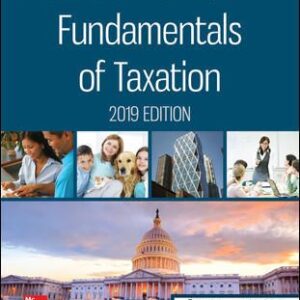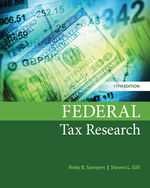Solution Manual for Taxation of Individuals 10th Edition by Spilker
ANSWERS TO QUESTIONS
- The time value of money is the idea that a dollar received today is worth more than a dollar to be received at any later date because it can be invested today to earn interest over time.
- Future value—The future value of a number of dollars is the amount that it will increase to in the future at i interest rate for n periods. The future value is the principal plus accumulated interest compounded each period.
Present value—The present value of a number of dollars, to be received at some specified date in the future, is that amount discounted to the present at i interest rate for n periods. It is the inverse of future value. In compound discounting, the interest is subtracted rather than added as in compounding.
- $10,000 x 2.59374 = $25,937 (rounded to the nearest dollar).
- $8,000 x .38554 = $3,084 (rounded to the nearest dollar).
- An annuity is a term that refers to equal periodic cash payments or receipts of an equal amount each period for two or more periods. In contrast to a future value of $1, or a present value of $1 (which involves a single contribution or amount), an annuity involves a series of equal contributions for a series of equal periods. An annuity may refer to a future value or a present value.
|
6. |
Table Values |
|||||||||
| Concept | i = 5% n =4 | i = 10%; n =7 | i = 14%; n = 10 | |||||||
| FV of $1 | 1.21551 | 1.94872 | 3.70722 | |||||||
| PV of $1 | 0.82270 | 0.51316 | 0.26974 | |||||||
| FV of annuity of $1 | 4.31013 | 9.48717 | 19.33730 | |||||||
| PV of annuity of $1 | 3.54595 | 4.86842 | 5.21612 | |||||||
- $1,000 x 14.48656 = $14,487. (rounded to the nearest dollar)
Authors’ Recommended Solution Time
(Time in minutes)
|
Mini-exercises |
Exercises |
Problems |
|||
| No. | Time | No. | Time | No. | Time |
| 1 | 2 | 1 | 10 | CP1 | 20 |
| 2 | 2 | 2 | 15 | CP2 | 20 |
| 3 | 6 | 3 | 15 | CP3 | 20 |
| 4 | 6 | 4 | 15 | CP4 | 15 |
| 5
6 7 8 9 10 11 12
|
3
3 3 3 3 3 3 3 |
5
6 7
|
5
10 8 |
PA1
PA2 PA3 PA4 PB1 PB2 PB3 PB4
|
20
20 20 15 20 20 20 15 |
ANSWERS TO MINI-EXERCISES
MC–1
| $500,000 ´ 0.46319 (Table C.2, n=10, i=8%) | = | $231,595 |
MC–2
| $15,000 ´ 6.14457 (Table C.4, n=10, i=10%) | = | $92,169 |
MC–3
| $100,000 (no PV) | = | $100,000 |
| + $100,000 ´ 0.92593 (Table C.2, n=1, i=8%) | = | 92,593 |
| + $ 30,000 ´ 9.81815 (Table C.4, n=20, i=8%) | = | 294,545 |
| Total | = | $487,138 |
MC–4
| $25,000 ´ 15.93742 (Table C.3, n=10, i=10%) | = | $398,436 | ||
| $15,000 ´ 57.27500 (Table C.3, n=20, i=10%) | = | $859,125 | ||
It is much better to save $15,000 for 20 years.




